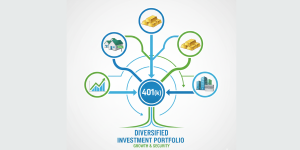Bank of America HSA Accounts: What You Need to Know
An HSA (Health Savings Account) is a specialized savings account available to employees with HSA-compatible health insurance plans. Bank of America HSA accounts require enrollment in the Consumer Directed High Deductible Plan (HDHP) to qualify.
With your Bank of America HSA account, you can save and invest contributions tax-free for qualified medical expenses. This gives you both immediate tax benefits and long-term growth potential.
Bank of America HSA accounts differ significantly from HRAs and FSAs in one key way: the money is yours to keep. When you leave the company or retire, your entire HSA balance goes with you.
FSAs and HRAs don’t offer this portability. Any unused funds in these accounts are forfeited when you leave the company.
The Pros and Cons of Having an HSA Account
Bank of America HSA accounts come with specific benefits and drawbacks tied to the high deductible health plan. Understanding these trade-offs helps you make the right choice for your situation.
Key Benefits of Bank of America HSA Accounts
HSA contributions are tax-deductible, directly reducing your taxable income each year. This creates immediate savings during tax season.
Once your Bank of America HSA account reaches $2,000, you can invest the excess funds. This investment threshold is a key feature of the program.
All capital gains and interest grow completely tax-free when used for qualified medical expenses. This triple tax advantage makes Bank of America HSA accounts powerful savings vehicles.
High deductible health plans paired with HSAs have lower monthly premiums than traditional plans. This saves you money on every paycheck.
Potential Drawbacks to Consider
High deductible plans can cost more overall if you use healthcare services frequently. The upfront savings on premiums may not offset higher out-of-pocket costs.
Bank of America HSA accounts require regular contributions to maximize their value. Many employees don’t contribute consistently enough to see real benefits.
The high deductible nature of these plans creates increased financial risk. You’ll pay more upfront before insurance coverage kicks in.
What is a Health Reimbursement Account (HRA)?
Understanding HRAs helps when comparing Bank of America’s three health plan options. The Consumer Directed Plan includes an HRA instead of an HSA.
HRAs function similarly to Bank of America HSA accounts but don’t require a high deductible plan. This gives you more flexibility in choosing coverage.
Unlike Bank of America HSA accounts where you make contributions, only the employer funds HRAs. Bank of America makes an annual contribution based on your Performance Year Cash Compensation (PYCC).
Unused HRA funds roll over annually, similar to HSA accounts. However, keeping these funds when you leave requires meeting specific vesting requirements.
You can only retain unused HRA funds if your vesting years plus age equals 60 or more with at least 10 years of service. Bank of America HSA accounts don’t have this restriction.
Choosing Between a Low or High Deductible Health Plan
Selecting the right Bank of America health plan requires understanding the deductible differences. The company offers three medical plans: Comprehensive PPO, Consumer Directed Plan, and Consumer Directed High Deductible Plan.
For 2025, the Bank of America health plans have the following deductibles:
| Insurance Plan | In-Network Deductible | Out-of-Network Deductible |
| Comprehensive PPO | Individual – $500 Family – $1,000 | Individual – $1,000 Family – $2,000 |
| Consumer Directed Plan | Individual – $1,200 Family – $2,400 | Individual – $2,400 Family – $4,800 |
| Consumer Directed High Deductible Plan | Individual – $2,250 Family – $4,500 | Individual – $4,500 Family – $9,000 |
The HDHP appears attractive due to lower premiums. However, the significantly higher deductibles create substantial financial risk.
Frequent doctor visits make low deductible plans more cost-effective despite higher premiums. Your expected healthcare usage should drive your decision.
Out-of-pocket maximums are equally important when evaluating Bank of America health plans. This cap limits your annual healthcare spending.
Below are the out-of-pocket maximums for each of the Bank of America medical plans:
| Insurance Plan | Out Of Pocket Maximum (In Network) | Out Of Pocket Maximum (Out of Network) |
| Comprehensive PPO | Individual – $2,000 Family – $4,000 | Individual – $4,000 Family – $8,000 |
| Consumer Directed Plan | Individual – $3,500 Family – $7,000 | Individual – $7,000 Family – $14,000 |
| Consumer Directed High Deductible Plan | Employee – $4,000 Individual – $7,350 Family – $8,000 | Individual – $8,000 Family – $16,000 |
Higher expected medical expenses reduce the value of Bank of America HSA accounts and HDHPs. The math changes based on your healthcare needs.
When Bank of America HSA Accounts Make Sense
Young, healthy employees typically benefit most from Bank of America HSA accounts. Lower healthcare usage means the high deductible rarely comes into play.
If you only need routine care, generic prescriptions, or preventive services, an HSA-eligible plan works well. Your medical costs stay predictable and low.
Opening a Bank of America HSA account lets your money grow tax-free into retirement. This long-term benefit compounds significantly over decades.
Budget constraints sometimes make HDHP premiums the only affordable option. Bank of America HSA accounts at least provide tax benefits in this situation.
When Low Deductible Plans Work Better
Older employees or those with health conditions should carefully consider Bank of America HSA accounts. Higher healthcare usage quickly erodes the premium savings.
Frequent insurance use makes low deductible plans more economical. You’ll reach the lower deductible faster and access coverage sooner.
Risk-averse individuals prefer the predictability of low deductible plans. You avoid the potential for unexpected high medical bills.
If you can afford higher premiums, low deductible plans provide better coverage from day one. The extra monthly cost buys peace of mind.
We’ve created a customized spreadsheet to compare Bank of America health plans. Enter your anticipated costs to see personalized estimates.
What Are Qualified Medical Expenses?
Understanding qualified expenses is critical for using Bank of America HSA accounts correctly. The IRS defines these in Internal Revenue Code Section 213(d).
Qualified medical expenses cover diagnosis, cure, mitigation, treatment, or prevention of disease. They can also include expenses affecting body structure or function.
Common Bank of America HSA Account Expenses
Acupuncture services and ambulance rides qualify as HSA-eligible expenses. These therapeutic and emergency services are fully covered.
Prosthetics and artificial limbs can be purchased with Bank of America HSA account funds. Dental treatment also qualifies for tax-free withdrawals.
Contact lenses, doctor’s fees, and hearing aids are all HSA-eligible purchases. Even hearing aid batteries qualify under the rules.
Hospital services, laboratory fees, and prescription medications qualify for HSA funds. Nursing home and nursing services are also covered expenses.
X-rays and other diagnostic imaging can be paid with your Bank of America HSA account. These common medical services fall under qualified expenses.
How Do I Make Contributions To My HSA?
Three Ways to Fund Your Bank of America HSA Account
Payroll deductions let you automatically fund your Bank of America HSA account pre-tax. A set amount transfers from each paycheck directly into your HSA.
Online deposits allow one-time or recurring contributions from your checking or savings account. This gives you flexibility in contribution timing.
You can mail checks with contribution forms to fund your Bank of America HSA account. This traditional method still works for those who prefer it.
Contribute as often as you want, provided you don’t exceed IRS limits. Payroll deductions typically work best because they’re automatic and pre-tax.
Is There a Limit To How Much I Can Contribute?
The IRS sets annual contribution limits for Bank of America HSA accounts. For 2026, individuals can contribute $4,400 and families can contribute $8,750.
If you’re 55 or older, add an extra $1,000 catch-up contribution to your Bank of America HSA account.
Can I Invest My HSA Funds?
Bank of America HSA accounts allow investment once you reach the $2,000 threshold. Every dollar above $2,000 can be invested in various options.
This investment feature transforms your HSA into a powerful retirement savings tool. The combination of tax benefits and investment growth is hard to beat.
Sample HSA Growth (Assuming 4% Annual Return)
Investing Bank of America HSA account funds can significantly boost your medical expense savings. The example below shows growth potential with a conservative 4% return.
| Jim and Sue (Age 35) | Kathy & Ken (age 55) | |
| Year of retirement | 2052 | 2032 |
| Annual HSA contribution | $6,150 | $7,150 |
| Annual out-of-pocket medical expenses | $1,000 | $0 |
| HSA contributions saved to use in retirement | $154,500 | $71,500 |
| HSA investment income until retirement | $134,337 | $14,344 |
| Total HSA tax savings at retirement | $79,709 | $21,461 |
| Total HSA balance in retirement | $288,837 | $85,844 |
Are There Any Tax Benefits To Choosing The HSA Option?
Bank of America HSA account contributions are tax-deductible, directly reducing your taxable income. This creates immediate savings beyond the long-term investment benefits.
The chart below illustrates how much money you can save in taxes, just by contributing to an HSA:
| Income | $7,300 | $7,300 |
| HSA contribution | $0 | $7,300 |
| 25% federal income tax | -$1,825 | $0 |
| Funds left to pay for qualified medical expenses | $5,475 | $7,300 |
With maximum contributions of $8,550 in 2025 and $8,750 in 2026, Bank of America HSA accounts offer substantial tax savings. Contributing annually until retirement creates significant tax advantages.
The tax savings alone can fund a large portion of your Bank of America HSA account contributions. This effectively reduces your out-of-pocket cost.
Can I Use My HSA Funds For Non-Qualified Expenses?
Yes, but Bank of America HSA account withdrawals for non-qualified expenses face penalties. You’ll pay income tax plus a 20% penalty on these distributions.
The 20% penalty disappears after age 65, death, or disability. At that point, you only pay regular income tax on non-qualified withdrawals.
Does Bank of America Contribute Money To The HSA Or HRA Accounts?
Bank of America contributes to both employee HSA and HRA accounts annually. Contribution amounts are based on your Performance Year Cash Compensation.
The company contributes identical amounts to Bank of America HSA accounts and HRAs each year. These employer contributions count toward the IRS annual maximum.
Be careful not to over-contribute when making your own deposits to Bank of America HSA accounts. Exceeding the IRS maximum triggers penalties.
What Happens To My HSA If I Leave My Employer?
Your Bank of America HSA account funds remain yours after leaving the company. You can continue using them tax-free for qualified medical expenses indefinitely.
This portability applies whether you switch jobs, retire, or drop HDHP coverage. However, you cannot make new contributions without HDHP coverage.
Does Bank of America Offer HSA Accounts?
Bank of America absolutely offers HSA accounts to employees enrolled in qualifying high deductible health plans. These accounts provide valuable tax benefits and investment opportunities.
If you want to learn more about optimizing your Bank of America HSA account or other wealth management topics, visit Calamita Wealth Management. Contact us today to speak with one of our experienced advisors.







